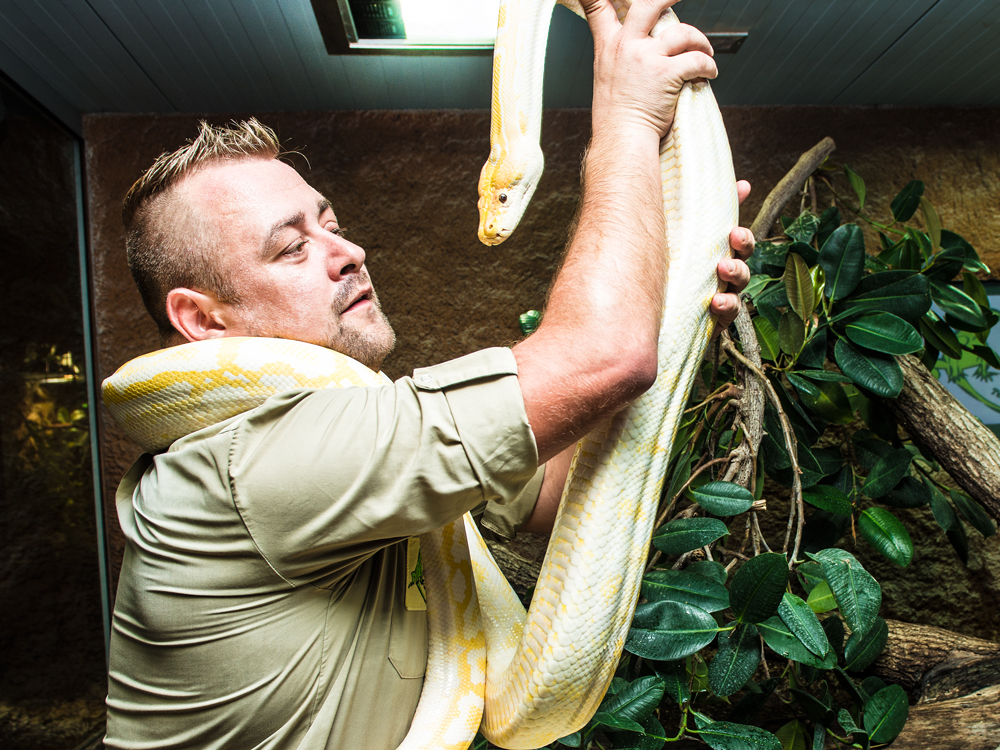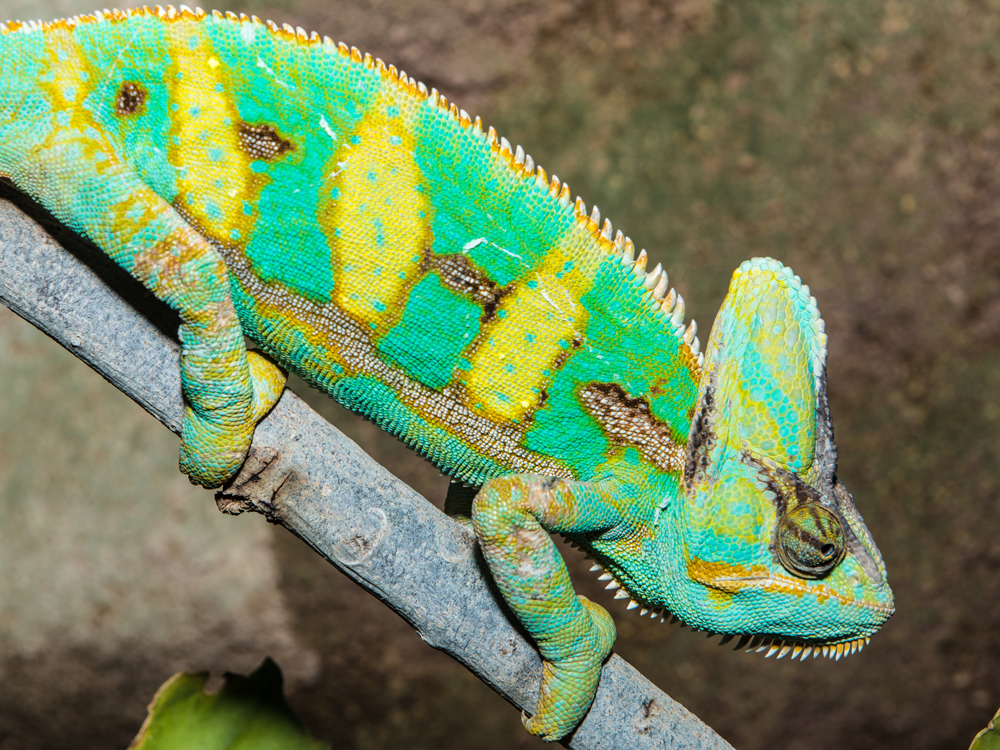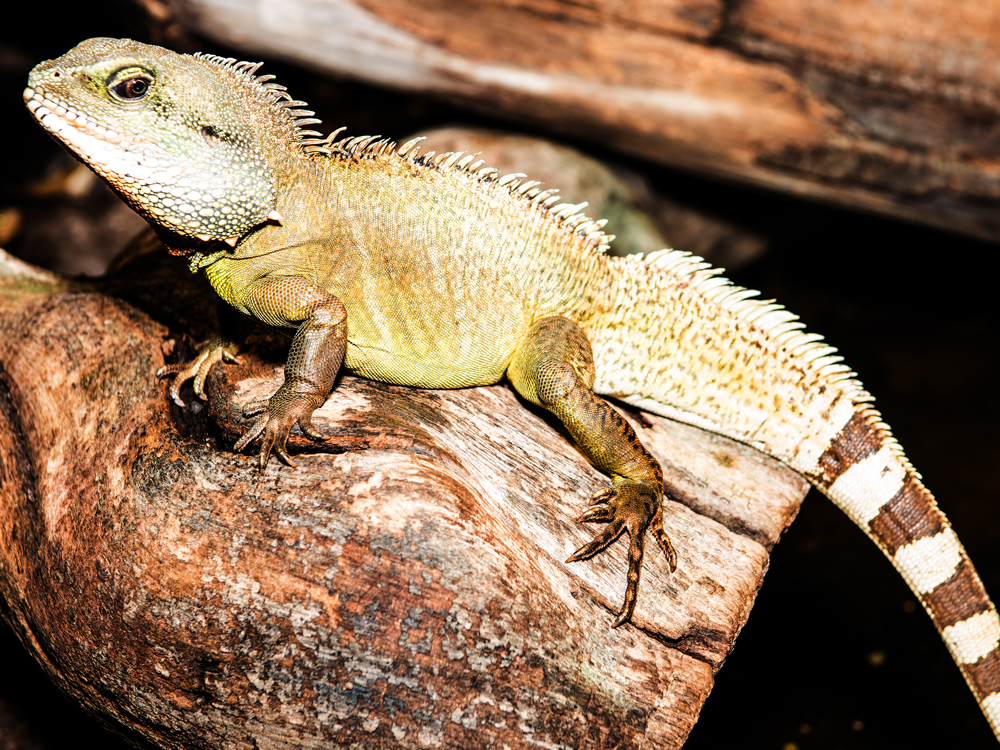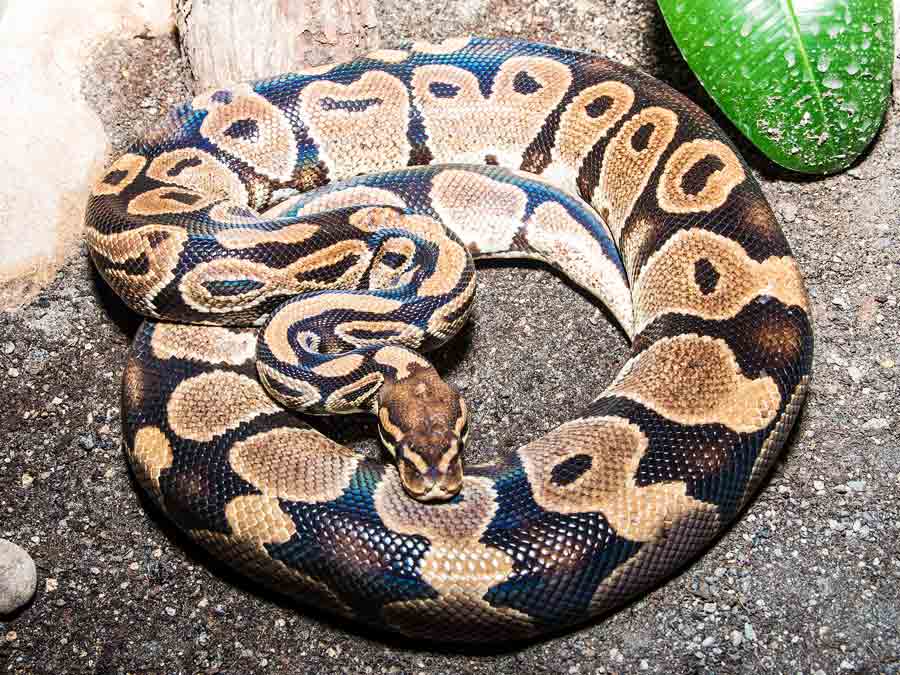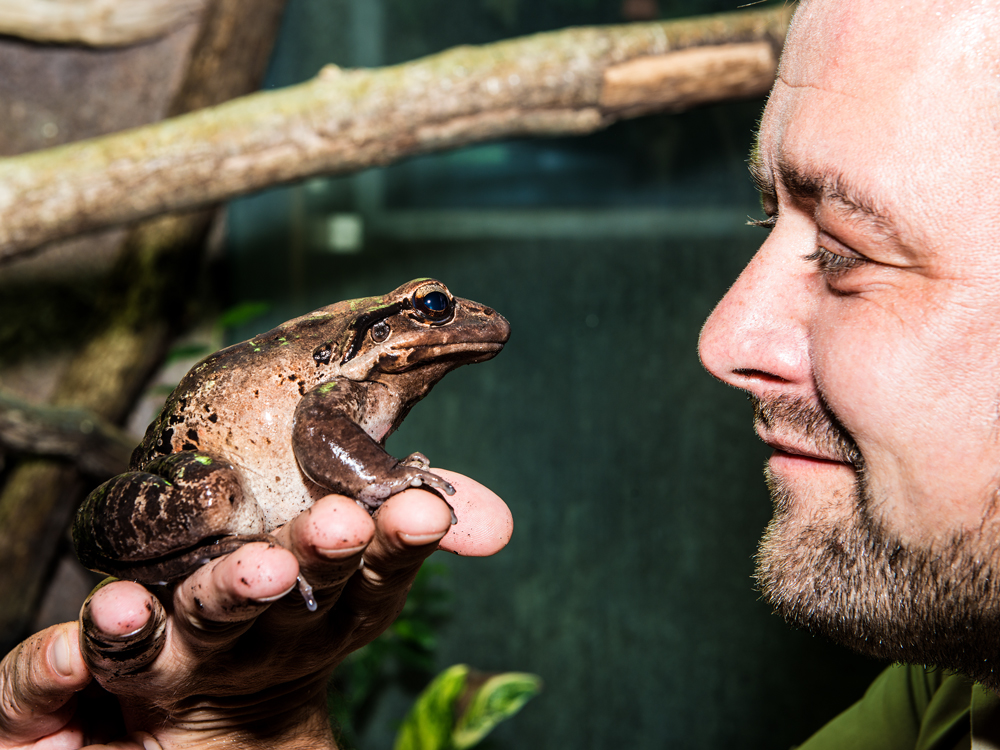At eighteen, Uwe Wünstel moved out of home – not for a woman, but for a snake. Today he runs Europe’s biggest reptile zoo in the city of Landau.
A snake such as Albert could be used as a necklace. At least for a short moment. He has proved it many times. The male black-tailed python had been positioned on lightly dressed female skin and published in the magazines “Playboy” and “Vogue”. This afternoon, however, there will be no photo shoot with the yellow and white albino snake. He is dozing composing himself on the fork of a tree and his zoo keeper Uwe Wünstel is watching him from the other side of the terrarium pane. “I saw him hatching out of his egg,” the director of the reptile house “Reptilium” in Landau tells us almost lovingly. Not quite like a father, he says, but if he felt a bond between him and one of the animals, it would be Albert.
A reptile is not at all a cuddly toy, but it is the passion of a man who built up the biggest reptile zoo in Europe. He has done it off his own bat and without any funding. Wünstel manages the “Reptilium”, which is home to over 1,000 animals making up 140 species, together with his family and 28 employees on a surface of 5,400 square metres. What makes his reptile zoo special is that he has created an impressive reptile cosmos rather than just stringing together terraria. In no time, visitors are guided from the desert to the tropics, through the subtropics and the rainforest. There is even a “Nachthaus” (night house), lit up by artificial moonlight. Here, you can watch animals such as the nocturnal leopard gecko, which crawls around under the special light when visitors enter.
When a software company building was turned into this zoo twelve years ago, Uwe Wünstel paid particular attention to keeping the animals spaciously and in environments appropriate to their species and to making visitors aware of each terrarium reflecting a particular part of nature. In a period of only five months, he thus created habitats in cooperation with the biologist Thomas Willms who is a deputy zoo director in the city of Frankfurt today. What came of it are terraria such as the one with species from South America. Oscar fish are swimming in the basin and Geoffroy’s toadhead turtles are drowsing on its bank, with common marmosets and green iguanas hopping above their heads.
